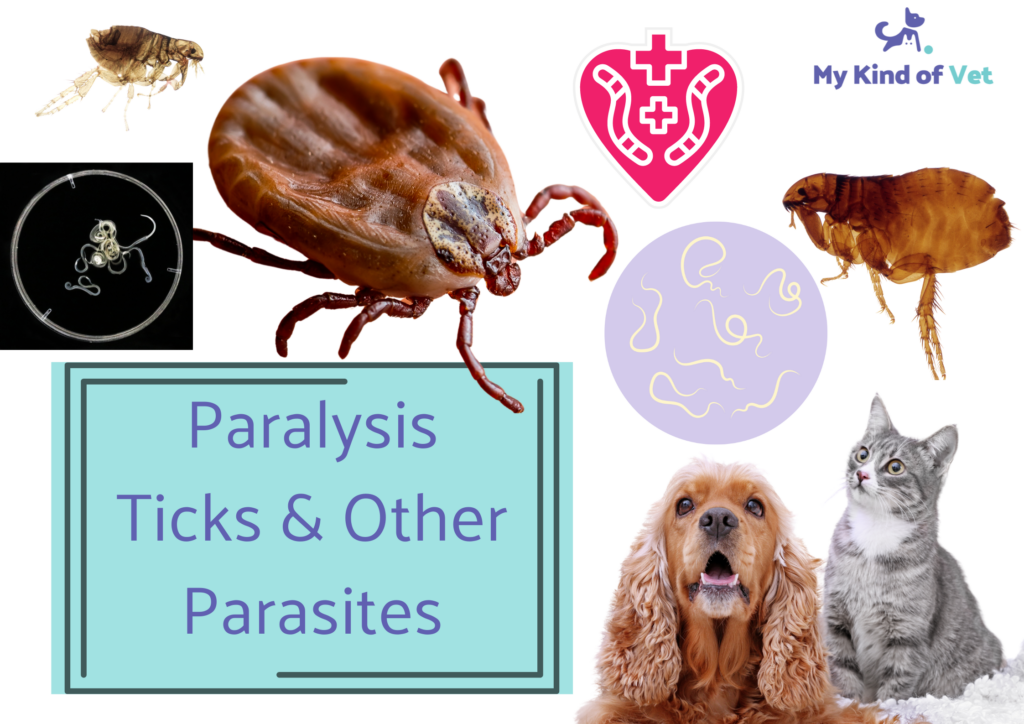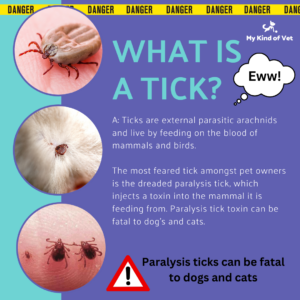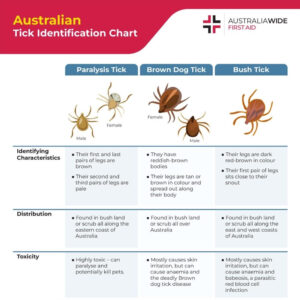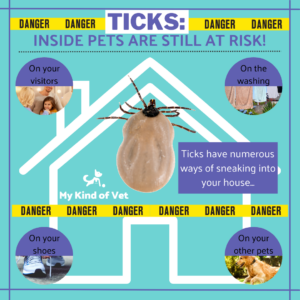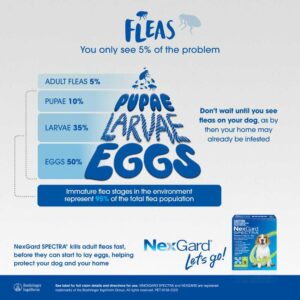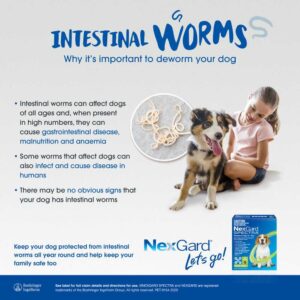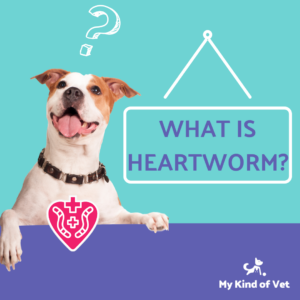Paralysis Ticks & Other Parasites
Ticks
What are they?
Ticks are small arachnid parasites that feed on the blood of mammals, birds, reptiles, and amphibians by attaching themselves to their hosts’ skin with specialised mouthparts.
Ticks are commonly found in a variety of habitats where their hosts frequent.
These include:
- Wooded and forested areas: Ticks thrive in environments with dense vegetation, leaf litter, and bushes where they can easily latch onto passing hosts.
- Grassy and meadow areas: Ticks can be found in fields, pastures, and grasslands, particularly where there are deer, rodents, and other wildlife that serve as hosts.
- Shrubs and gardens: Ticks can also inhabit suburban and urban areas with gardens, shrubbery, and tall grasses where pets and wildlife may pass through.
- Coastal areas: In some regions, ticks can be found in coastal habitats with dense vegetation and wildlife, such as dunes and marshes.
- Animal resting areas: Ticks often wait in areas where animals rest or shelter, such as barns, kennels, and bedding areas.
Ticks tend to avoid open, dry, or hot areas but can survive in a wide range of climates and conditions, depending on the species. They wait on vegetation or in leaf litter, using their sensory organs to detect passing hosts and attaching themselves to feed on blood.
In Australia, several varieties of ticks are prevalent, including:
1. Paralysis tick (Ixodes holocyclus): This species is notorious for causing paralysis in pets and livestock. It is found along the eastern coast of Australia and can transmit toxins that affect the nervous system. Paralysis tick toxin can be fatal to both cats and dogs.
2. Brown dog tick (Rhipicephalus sanguineus): Commonly found on dogs and occasionally on other animals, this tick species can also infest homes and kennels.
3. Bush tick (Haemaphysalis longicornis): Found in various habitats across Australia, this tick species can infest a wide range of hosts, including livestock, native animals, and domestic pets.
4. Cattle tick (Rhipicephalus microplus): A significant pest for cattle, this tick species can cause economic losses due to reduced production and transmission of diseases.
Symptoms of the paralysis tick
Pets bitten by a paralysis tick can exhibit a range of symptoms depending on the severity of the infestation and the pet’s sensitivity to the tick’s toxins. Symptoms may include:
-Weakness and lethargy: The pet may appear tired or weak, with decreased energy levels.
–Change in voice or bark: Dogs may develop a hoarse bark or difficulty vocalising.
-Difficulty swallowing: Pets may show signs of gagging, retching, or excessive drooling.
-Wobbly or uncoordinated gait: Known as ataxia, this symptom can progress to full-body paralysis if untreated.
-Vomiting or regurgitation: Pets may experience nausea and may vomit or regurgitate food.
-Breathing difficulties: In severe cases, respiratory distress can occur.
-Changes in pupil size: Pupils may become dilated or show abnormal reactions to light.
-Collapse: In advanced stages, pets may collapse or become unable to stand or move.
It’s crucial to seek veterinary attention immediately if a pet shows any of these symptoms, especially if a paralysis tick bite is suspected. Prompt treatment is essential to prevent further paralysis and potentially life-threatening complications.
Common myths
Myth: Paralysis ticks are only found in rural areas.
Fact: While paralysis ticks are more common in bushy and coastal regions, they can also be found in urban and suburban environments. Ticks thrive in areas with vegetation and can easily attach to pets that venture outdoors, regardless of location.
Myth: Only outdoor pets are at risk of ticks.
Fact: Indoor pets are also at risk of tick infestations. Ticks can be brought indoors on clothing, shoes, or other pets, and they can survive and thrive in indoor environments if they find suitable hosts. Regular tick prevention measures should be taken for both indoor and outdoor pets.
Myth: Removing a tick with heat or chemicals is effective.
Fact: Applying heat or chemicals such as alcohol or nail polish to a tick can irritate it and may cause it to release more toxins into the pet’s bloodstream. The safest way to remove a tick is by using fine-tipped tweezers or a tick tool to grasp the tick as close to the skin as possible and pull it out steadily and gently.
Myth: Once a tick is removed, the danger is over.
Fact: Tick paralysis can continue to progress even after a tick is removed, as the toxins injected by the tick remain in the pet’s system. Immediate veterinary attention is crucial if a pet shows symptoms of tick paralysis, even after removal of the tick.
Fleas
What are they?
Fleas are tiny, wingless parasites that survive by feeding on the blood of mammals and birds. They possess specialised mouthparts to pierce skin and consume blood, causing itching and discomfort. What makes them particularly challenging to eradicate is their rapid reproductive cycle. A single female flea can lay hundreds of eggs within a short period, and these eggs can fall off their host into surrounding environments, such as carpets, bedding, and soil.
Flea eggs are resilient, capable of lying dormant for months until conditions are suitable for hatching. Once they hatch into larvae, they spin cocoons where they develop into adult fleas. This life cycle enables them to persist even after initial treatments, necessitating thorough and persistent pest control measures to effectively eliminate.
Symptoms
Fleas can cause a variety of symptoms in cats and dogs, including:
-Itching and scratching: One of the most common signs of a flea infestation is excessive scratching, biting, or licking, particularly around the tail base, groin, or armpits. Pets may also chew at their fur to relieve discomfort.
-Skin irritation: Flea bites can lead to redness, inflammation, and skin lesions. In severe cases or in pets with flea allergy dermatitis (FAD), these reactions can be intense and may lead to hair loss and secondary skin infections.
-Visible fleas or flea dirt: Fleas themselves can sometimes be seen on the pet’s fur, especially around the neck and back. Flea dirt (faeces) looks like tiny black specks and may be found in the pet’s fur or bedding, indicating an infestation.
-Restlessness: Infested pets may exhibit restlessness, pacing, or discomfort due to the irritation caused by flea bites.
-Anaemia (rare in mild cases): In severe infestations, particularly in young, elderly, or debilitated pets, fleas can cause enough blood loss to lead to anaemia. This is more commonly seen in kittens and puppies.
-Behavioural changes: Pets may become irritable or exhibit changes in behaviour due to discomfort caused by fleas.
Common myths
Myth: Only pets with poor hygiene get fleas.
Fact: Fleas can infest even the cleanest of pets and homes. They are opportunistic parasites that can be brought into the home through various means, such as contact with infested animals or environments.
Myth: Fleas are only a problem in warm weather.
Fact: While fleas are more active in warmer months, they can survive and thrive indoors year-round. Central heating in homes can provide a comfortable environment for fleas during colder seasons.
Myth: Pets without symptoms (like itching) don’t have fleas.
Fact: Pets can have fleas without showing obvious signs of itching or discomfort, especially if they are not allergic to flea saliva. Checking for fleas regularly and using preventive measures is important even if a pet appears asymptomatic.
Myth: Once fleas are gone, they won’t come back.
Fact: Flea infestations can recur if preventive measures are not maintained. Eggs and larvae can remain dormant in the environment for months, hatching when conditions are favourable.
Mites
What are they?
Pet mites are tiny parasites that belong to the arachnid class, similar to spiders and ticks. They can infest the skin, ears, or fur of pets, causing various health issues. The most common types of mites affecting pets include:
1. Ear mites: These mites specifically infest the ears of cats, dogs, and other animals, causing irritation, itching, and sometimes ear infections. Pets with ear mites often scratch at their ears or shake their heads frequently.
2. Demodex mites: Demodex mites are commonly found on the skin of dogs and other mammals. While they usually live harmlessly in hair follicles, in some cases, they can cause localised or generalised demodicosis, a skin condition characterised by hair loss, redness, and skin infections.
3. Sarcoptic mites: Also known as scabies mites, these parasites can infest dogs, cats, and other animals, as well as humans. Sarcoptic mange, caused by these mites, leads to intense itching, hair loss, and skin irritation. It is highly contagious between animals and can be transmitted to humans.
Mite infestations can vary in severity and may require specific treatments prescribed by a veterinarian. Symptoms of mite infestations in pets typically include itching, hair loss, skin redness, and sometimes secondary infections. Regular veterinary check-ups and preventive treatments can help reduce the risk of mite infestations in pets.
Intestinal worms
What are they?
Intestinal Worms in Cats:
- Roundworms (Toxocara cati) are a common intestinal parasite in cats. These worms can cause symptoms such as diarrhea, vomiting, a bloated abdomen, and occasionally coughing if larvae migrate to the lungs. Cats typically contract roundworms by ingesting infected prey or contaminated soil. While less common, roundworms can also be transmitted to humans, especially children, through accidental ingestion of infective eggs from contaminated environments, leading to a condition known as visceral larva migrans.
- Hookworms (Ancylostoma tubaeforme) are another type of intestinal parasite found in cats. Symptoms of hookworm infection include anemia, weight loss, diarrhea (sometimes with blood), and weakness. Cats contract hookworms through ingestion of larvae from contaminated soil or through skin penetration. Hookworm larvae can also cause skin conditions in humans upon skin penetration, known as cutaneous larva migrans.
- Tapeworms (Dipylidium caninum, Taenia spp.) are common in cats and often cause mild symptoms or may be asymptomatic. Visible segments of tapeworms may be observed around the cat’s anus. Cats typically acquire tapeworms by ingesting fleas or small mammals infected with tapeworm larvae. While tapeworm infections are generally not a significant health risk for humans, they can be transmitted if a person accidentally ingests infected fleas or lice, leading to intestinal infections.
Intestinal Worms in Dogs:
- Roundworms (Toxocara canis) are prevalent in dogs and can cause diarrhea, vomiting, a pot-bellied appearance, a dull coat, and occasionally coughing if larvae migrate through the lungs. Dogs typically contract roundworms by ingesting infective eggs from contaminated environments or through nursing from an infected mother. Human infection with roundworms can occur through accidental ingestion of infective eggs, leading to visceral larva migrans.
- Hookworms (Ancylostoma caninum, Ancylostoma braziliense) are intestinal parasites that commonly infect dogs. Symptoms include anaemia, weight loss, diarrhoea (often with dark, tarry stools), and weakness. Dogs contract hookworms through ingestion of larvae from contaminated soil or through skin penetration. Hookworm larvae can also cause cutaneous larva migrans in humans upon skin contact.
- Whipworms (Trichuris vulpis) can cause chronic diarrhoea, weight loss, and dehydration in dogs. Dogs typically acquire whipworms by ingesting infective eggs from contaminated soil. Whipworm infections are generally not transmissible to humans.
- Tapeworms (Dipylidium caninum, Taenia spp.) are also common in dogs and may not cause significant symptoms. Segments of tapeworms may be visible around the dog’s anus. Dogs contract tapeworms by ingesting fleas or small mammals infected with tapeworm larvae. Human infection with tapeworms can occur through accidental ingestion of infected fleas or lice, leading to intestinal infections.
Transmission to Humans:
Intestinal worm infections in pets can occasionally be transmitted to humans. Humans typically contract these infections through accidental ingestion or skin penetration of infective larvae, often from contaminated environments or through close contact with infected pets. This can lead to conditions such as visceral or cutaneous larva migrans, depending on the specific worm species involved. Practising good hygiene, such as washing hands thoroughly after handling pets and their faeces, and regular deworming of pets are essential measures to reduce the risk of transmission to humans.
Understanding these common intestinal worms and their modes of transmission helps in implementing effective preventive measures for both pets and humans. Regular veterinary check-ups and deworming treatments play a crucial role in maintaining the health and well-being of pets and humans.
Heartworm
What are they?
Heartworm disease is a serious disease that results in severe lung disease, heart failure, other organ damage, and can even cause death in pets, mainly dogs. It is caused by a parasitic worm called Dirofilaria immitis. The worms are spread through the bite of a mosquito.
The dog is the definitive host, meaning that the worms mature into adults, mate, and produce offspring while living inside a dog. The mosquito is the intermediate host, meaning that the worms live inside a mosquito for a short transition period in order to become infective (able to cause heartworm disease).
The worms are called “heartworms” because the adults live in the heart, lungs, and associated blood vessels of an infected animal. It is a horrible, debilitating disease and treatment is expensive and takes a very long time for recovery.
Luckily, this awful disease is preventable. prevention is available in monthly chews, or yearly injections. Please check today that your pet’s preventatives cover heartworm, and contact us if you are unsure or have any questions
Symptoms
Heartworm disease in dogs can progress through several stages, each with its own set of symptoms. These symptoms can vary depending on the severity of the infection and the individual dog’s response. Here are the common symptoms associated with heartworm disease in dogs:
Early Stage:
Often asymptomatic (no visible symptoms).
In some cases, mild and intermittent coughing.
Moderate Stage:
Persistent cough.
Reluctance to exercise or tiring easily.
Mild to moderate weight loss.
Advanced Stage:
Severe coughing, potentially with blood.
Difficulty breathing and shortness of breath.
Signs of heart failure, such as enlarged abdomen due to fluid accumulation (ascites) or difficulty breathing when lying down.
Fainting or collapse due to reduced blood flow and oxygen supply.
Pale gums due to anaemia.
It’s important to note that not all dogs with heartworm disease will show symptoms, especially in the early stages. Regular veterinary check-ups and heartworm testing are crucial for early detection and treatment. If you suspect your dog may have heartworm disease or if they show any of these symptoms, it’s essential to seek veterinary care promptly. Early diagnosis and treatment increase the chances of successful management of heartworm disease in dogs.
Common myths
Myth: Heartworm disease only affects dogs that spend a lot of time outdoors.
Fact: While outdoor dogs are at higher risk, indoor dogs can also contract heartworm disease. Mosquitoes, which transmit heartworm larvae, can enter indoor environments and infect dogs.
Myth: Heartworm disease is not a concern in cold climates.
Fact: Heartworm transmission can occur wherever mosquitoes are present, including colder regions. Indoor environments with central heating can also support mosquito survival.
Myth: Heartworm disease in dogs is quick and easy to treat.
Fact: Treatment for heartworm disease in dogs is complex, lengthy, and can be costly. It involves multiple steps, including diagnostics, medication to kill adult worms, and managing complications. Treatment can also pose risks to the dog’s health during the process. The whole process takes roughly 12 months.
Myth: My dog doesn’t need heartworm prevention because they are young and have a healthy heart.
Fact: Heartworm infection does not have anything to do with the health and age of the dog or the condition of their heart. Heartworm is a parasite spread by mosquito bites and can effect any dog.
Your Guide to Parasite Prevention for Cats and Dogs
Ensuring your furry companions are protected against parasites is essential for their health and well-being. In Australia, where various parasites pose threats year-round, choosing the right prevention methods is crucial. Here’s a comprehensive guide to the options available for parasite prevention in cats and dogs, including insights on natural versus prescription methods.
Fleas and Worms Prevention
- Flea Prevention:
Prescription Options: Monthly topical treatments, oral medications, and collars are effective at preventing fleas. These products not only kill adult fleas but also disrupt the flea life cycle, preventing reinfestation.
Natural Options: Essential oils and herbal treatments may have repellent properties against fleas. However, their efficacy can vary, and they may not provide adequate protection in high-risk environments.
- Worms Prevention:
Prescription Options: Broad-spectrum deworming medications are available as tablets, chews, or spot-ons. They treat and prevent various types of intestinal worms, including roundworms, hookworms, and tapeworms.
Natural Options: Some natural remedies, such as pumpkin seeds or diatomaceous earth, are touted for their deworming properties. While they may have some effect against worms, they are often less reliable compared to prescription treatments.
Paralysis Ticks and Heartworm Prevention
- Paralysis Tick Prevention:
Prescription Options: Monthly spot-on treatments or collars containing specific acaricides are highly effective against paralysis ticks. These ticks can cause life-threatening paralysis within days, making reliable prevention crucial.
Natural Options: Natural repellents and preventatives are generally not recommended for paralysis ticks due to their unreliable efficacy. The risks associated with tick paralysis outweigh the benefits of natural alternatives.
- Heartworm Prevention:
Prescription Options: Monthly oral or topical medications are available to prevent heartworm disease, or alternatively a yearly injection is available. These medications kill heartworm larvae before they mature into adults that can cause heart and lung damage.
Natural Options: There are no proven natural remedies that effectively prevent heartworm disease. Given the severity of heartworm infection in dogs, relying on veterinarian-prescribed preventatives is essential.
Natural vs. Prescription Methods
When considering parasite prevention, especially for paralysis ticks and heartworms, prescription options are recommended over natural alternatives. While natural products may suffice for managing fleas and worms to some extent, they often lack the consistent efficacy and safety profile of prescription medications. Paralysis ticks and heartworms pose significant health risks to pets, and timely, effective prevention is critical in endemic regions like Australia.
Choosing the right parasite prevention plan for your pets involves consulting with your veterinarian. They can recommend the most suitable products based on your pet’s health, lifestyle, and the local parasite risks. Regular check-ups and adherence to preventive treatments ensure your pets stay protected against parasites year-round.
By prioritising parasite prevention, you’re not only safeguarding your pets but also promoting their overall health and happiness. Stay informed, stay proactive, and give your furry friends the best protection against parasites.
